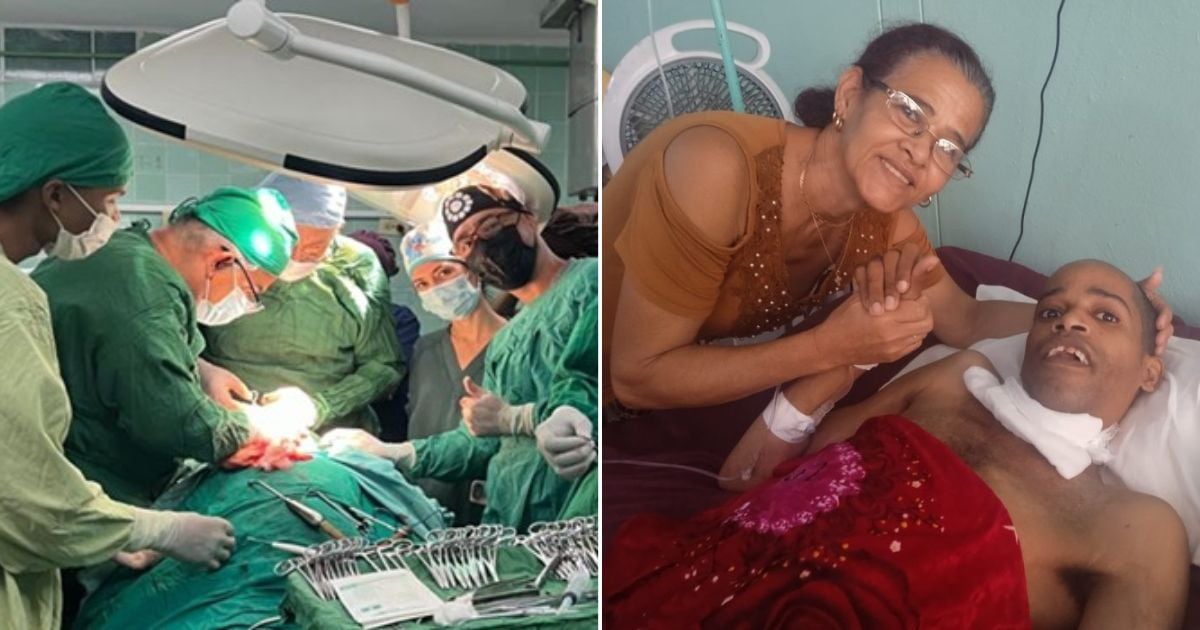Carlos Limendú Torres, a 24-year-old adaptive sports coach, remarkably survived a lightning strike while waiting for transportation in his hometown of Remedios, Villa Clara. That fateful day over two years ago altered his life completely, though Carlos has no memory of the event. His only witness was a child, one of his students, who was with him at the time of the accident.
The state-run newspaper, 5 de Septiembre, reported that the lightning strike left him in a critical condition. While he managed to survive, he faced severe challenges: paraplegia, serious burns, difficulty swallowing, excessive salivation, and the loss of his voice due to acquired tracheal stenosis, a condition caused by prolonged mechanical ventilation.
For some time, Carlos lived with a tracheostomy, unable to speak or breathe naturally. The sole remedy was a complex surgical procedure he discovered on his own while browsing the internet, which eventually led him to the medical team in Cienfuegos. Upon learning that such surgeries were performed in that province, he reached out directly to the specialists.
The case was taken up by Dr. Daniel Olivera Fajardo and Dr. Alejandro Díaz González, who accepted the challenge despite additional complications like pharyngeal dysfunction and tracheomalacia. The surgery involved removing the stenosed section of the trachea and reconnecting the healthy ends. This high-complexity procedure required a multidisciplinary team, specialized anesthesia, and a modified technique tailored to Carlos's unique situation.
Today, Carlos is recovering in the Otolaryngology Ward of the Cienfuegos hospital and has spoken for the first time in over two years. His voice, though still faint, is a testament to his resilience. Despite his paraplegia and the involuntary movements he continues to experience, he dreams of returning to coaching. His mother, Raquel, has witnessed every phase and recalls the despair of waiting for care that never came in Havana, and how her son found medical hope in Cienfuegos through determination and signs.
“I want to go back to work, even if it's in a wheelchair, but with my voice,” Carlos expresses with emotion as he recovers under careful supervision. His mother stands by his side, helping him protect every word to preserve what he has regained with such effort.
Limendú was fortunate to survive the lightning strike. Although no lives were lost in his incident, the danger remains ever-present. Earlier this month, a tragic afternoon shook the province of Artemisa with the death of three minors in separate incidents in the municipality of Bauta. Two teenagers, aged 13 and 16, died on June 7 after being struck by lightning while playing soccer outdoors in Barrio Pita, as reported by the provincial newspaper El Artemiseño.
Understanding Lightning Strike Survivors and Risks
What are the common injuries from a lightning strike?
Common injuries from lightning strikes include burns, cardiac arrest, respiratory issues, neurological damage, and in severe cases, death.
How can one stay safe during a lightning storm?
To stay safe during a lightning storm, seek shelter indoors or in a car, avoid open fields, tall trees, and metal objects. Follow the "30-30" rule: seek shelter if the time between seeing lightning and hearing thunder is 30 seconds or less, and wait 30 minutes after the last thunder before resuming outdoor activities.
